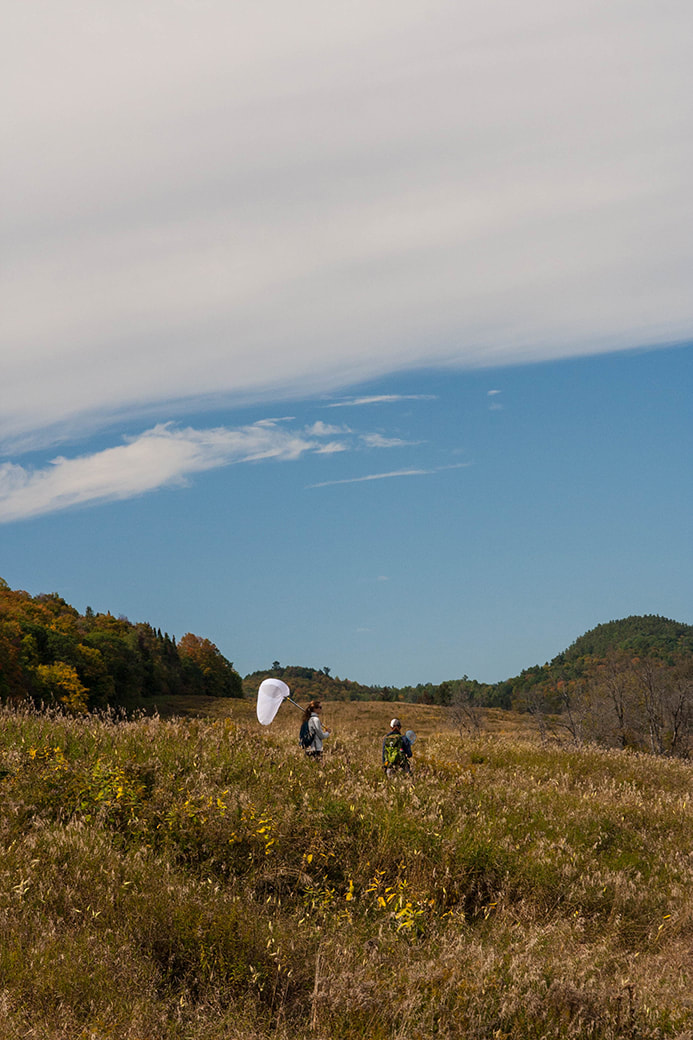|
This year has seen our first monarch tagging activity. It started off great with a monarch flying right into the parking lot, just after we finished the explanations (while the Coordinator [yours truly] was storing the excess equipment!). The entire team was able to participate in catching and tagging this butterfly. This lucky encounter somewhat set aside the doubts we had because of the temperature and wind and it is with higher confidence that we set out toward the fields.
In the end, we caught a grand total of one monarch. . . . To paraphrase one of the participants, at least we can say that we tagged 100% of the monarchs we caught! :-) (And the results are 100% better than they would have been on the original [rainy] date.) We also spent a beautiful afternoon in nature, having fun with like-minded individuals, in the magnificent landscape of the Meech Creek Valley. Moreover, we came across a yellow garden spider (argiope aurantia), a fairly common, but visually striking, species of spider, and one that I had never before seen in person (something I was very much hoping would happen eventually). Monarch tagging While the monarch’s migrations are fairly well known, tagging programs continue to reveal important information about them. According to Monarch Watch, their program (to which we contribute with this activity) yields information about the origin of the monarchs that reach Mexico, the timing and duration of their migration, their mortality rate, and changes in the geographic distribution. Hence, these programs help us better understand this phenomena and the factors affecting success. They are also a great example of large scale citizen science and its contributions to regular science. https://monarchwatch.org/tagging/ Simon Landry Les commentaires sont fermés.
|
AuteurÉcrivez quelque chose à votre sujet. Pas besoin d'être fantaisiste, juste un aperçu. Archives
Décembre 2021
Catégories |








 Flux RSS
Flux RSS